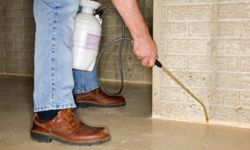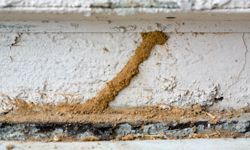Key Takeaways
- Exterminators check areas where wood contacts the ground near the house, such as wood fencing and mulch, as termites can follow these directly into your home.
- They inspect wood piles and other wooden structures around the property, advising that you store firewood off the ground and away from the house to reduce termite attraction.
- Exterminators note any deadwood or fallen tree limbs on the property for removal since these can also be hot spots for termite activity.
So, you're thinking about calling an exterminator to address those nagging worries you have about termites eating your house out from under you. Maybe you think you hear the sound of chewing in your walls (that's probably your imagination), or you just discovered a winged ant in your basement and fear the worst. After all, termites are destructive pests. They're found in 49 of the 50 states (Alaska has been spared the scourge), and cause an estimated $50 billion in damage to buildings and dwellings every year.
Termites are scary because they can cause extensive damage before you ever realize you have a pest problem. They eat wood from the inside out, so their presence is hard to detect unless you know what to look for. Everything will look solid and sturdy until your porch starts listing to the left or collapses completely. Well, it's not quite that bad. Termites actually work pretty slowly, especially when you consider that some nests can harbor hundreds of thousands of hungry mouths to feed.
Advertisement
If you have your home evaluated annually or do the honors yourself (with a few tips from us), you can usually spot an infestation before termites can do much damage to your home's foundation. Termites are sneaky, working in secret areas of your home you seldom inspect very closely. They aren't infallible, though. On the next few pages, let's take a look at five key things a termite inspector will look for to determine whether or not you have a termite problem. Grab your work shoes; we're going on a bug hunt.

